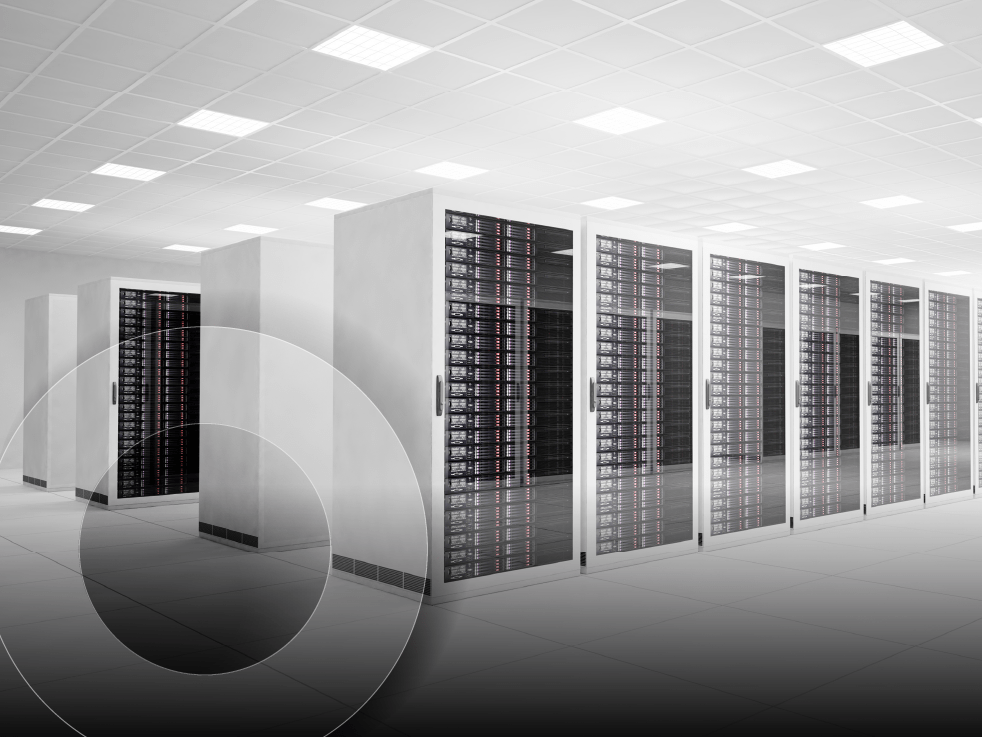How to build a better (and cost-effective) data center in 2024:
Navigating the complexities of modern data center infrastructure

Once viewed as stationary warehouses for IT equipment, data centers are now dynamic foundations underpinning the digital transformation initiatives shaping organizations.
A decade ago, data center spending accounted for roughly 36% of overall IT spending. Now, it’s projected to account for nearly 53%. The data center IT infrastructure market size, valued at $241.2 billion, is expected to expand at a compound annual growth rate (CAGR) of 6.2%, reaching almost $290 billion in 2026. “Global data center capex is on track to reach $400 billion by 2027,” according to a recent Dell’Oro Group report.
Yet, despite the rising strategic importance of data centers, most organizations misjudge the resources and expertise needed for long-term success. This miscalculation hampers their potential growth and exposes them to significant operational and security risks.
As such, IT decision makers are confronted with a crucial question: How do you build a data center infrastructure that is not only resilient and future-ready but also aligns with your evolving business needs?
The complex ecosystem of the modern data center
The data center’s transformation mirrors the rapid advancements in technology and the escalating demands of a data-driven world.
These infrastructures now support everything from basic data processing to complex analytics powered by artificial intelligence (AI) and machine learning (ML). However, adapting to these technological advancements is not without challenges.
Integrating AI and ML into data center operations requires advanced hardware and sophisticated software solutions. They also demand high processing power and generate vast amounts of heat and data, creating storage, management, cooling, and security obstacles.
The proliferation of internet of things (IoT) devices adds another layer of complexity. Each device, from sensors to smart appliances, contributes to the proliferation of unstructured data, requiring robust processing and storage capabilities. Managing this IoT ecosystem involves ensuring seamless connectivity, real-time data processing, and maintaining the integrity and security of the data.
Scalability is another critical aspect. As organizations grow and evolve, their data centers must be able to scale accordingly. This goes beyond adding more servers or storage — you must make sure the entire infrastructure can adapt to changing needs without compromising performance or security.
The challenges of building data center infrastructure
Data center deployment is fraught with obstacles. First, there’s the scarcity of skilled technicians and engineers.
Today, more than half of organizations (54%) are experiencing a tech skills shortage.
Second is the technological complexity. Integrating the latest advancements in AI, ML, and IoT into a cohesive data center strategy requires technical acumen and a strategic vision. Then there are the logistical hurdles. Securing the right components from various original equipment manufacturers (OEMs), managing potential dead on arrival (DOA) situations, and handling warranty claims can derail project timelines and inflate budgets.
Additionally, “empty cage” costs — the financial burden of underutilized space while waiting for equipment — often go unnoticed but can significantly impact the bottom line.
The perils of a DIY approach
Despite the obvious pitfalls, some still opt for the DIY approach to building data center infrastructure. The assumption is that without the middleman, organizations can save costs and exert greater control. However, this rarely plays out as expected.
The intricacies of designing and implementing a data center are often underestimated. It’s not just about purchasing hardware; it’s about creating an ecosystem where different technologies work in harmony. This requires a deep understanding of current tech and future trends. Without it, your infrastructure can become obsolete prematurely.
Logistical challenges are another area organizations often overlook. Coordinating the delivery of various components, managing inventory, and handling potential defects or compatibility issues can quickly become overwhelming. Hidden costs, such as energy inefficiencies and the need for ongoing maintenance, can significantly increase the total cost of ownership (TCO).
Building data center infrastructure also requires a range of expertise, from network engineers and hardware technicians to security specialists who are certified by OEM technology providers to build a data center deployment. Finding and retaining this talent can be challenging and expensive. But without this expertise, you risk inefficiencies and security vulnerabilities, which can have far-reaching consequences.
Of course, after reading this, perhaps you’re thinking to yourself, “Instead of bothering with the intricacies of deploying my own infrastructure, I’ll just put my workloads in the cloud.” But this path presents its own challenges around cost, complexity, security, and compliance.
SHI offers comprehensive services designed to streamline and simplify the process, enabling you to balance these factors and maintain control.
How SHI transforms data center projects
SHI’s integrated data center solutions (IDCS) transform complex data center projects into manageable, successful operations.
With IDCS, you can reduce your build costs by 30%, decrease your “empty cage” costs by 50%, and provision your data center three times faster.
This efficiency stems from SHI’s six global integration centers, which can handle large-scale server configurations and ensure rapid deployment. This approach accelerates the setup process and mitigates unpredictable supply chain risk.
By handling everything from planning and design to configuration, testing, and installation, we ensure that your data center infrastructure is set up efficiently and optimized for operational readiness from day one.
Charting a course for success
As data center infrastructure grows increasingly vital for organizations, so does the complexity of effectively building and managing it. The challenges are pushing many leaders toward an inflection point.
The option to forge ahead alone remains alluring but rife with landmines, from escalating costs to security vulnerabilities. The alternative — embracing partners purpose-built to navigate the turbulence — offers welcome capabilities and efficiencies.
Of course, every organization’s needs vary. But with the right solutions in place, data centers become catalysts for innovation, not inhibitors. As technology progresses exponentially, solutions must keep pace. For forward-thinking IT leaders, the next milestone begins with data center transformation. Their future won’t wait; why should their infrastructure?
SHI’s IDCS offers a pathway to navigating the complexities of modern data center infrastructure. Book a tour to learn how we can help you speed up deployment, reduce costs, and avoid complex logistical nightmares.




